Ever since I used M80 speed glaze, I've been wanting a more aggresive product to remove scratches that Speed Glaze could not.
I have no experience with a rotary buffer, my only choice is M83 Dual Action Cleaner/Polish to go with a Random Orbital Buffer(PC/DA).
My first impression on the product itself is that it is thicker than M80 Speed Glaze, more creamy than liquid.
I read several threads about DACP first, teh I knew that I had to work it in longer than most polishes because of it's less 'oily' nature.
So I took my pad, mist it with Last Touch spray detailer to prime the pad, and put a small 'X' of DACP in the middle of the pad.
press it against the panel a few times, spread the polish and work it in. The very first time I am working with DACP was with the guidance of a 300w Halogen Lamp.
This is what the finish looks like before any polishing, just a wash and clay.
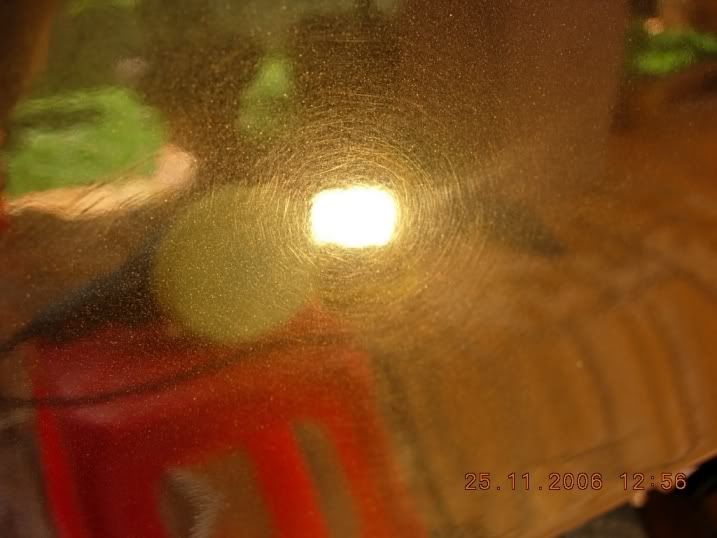
Working it in until it turns clear, without any haze at all. The polish is then wiped off with a microfiber without any effort at all. Remarkably, DACP brought the original colour of the paint back, with about 50% of the swirls removed.
I wanted to see if any more passes would make a difference,
I gave it another 2 passes, 80% of the swirls were removed, what's left were deeper scratches in random directions. I gave it two more passes, the deeper scratches were still there.
This is the result after 3 passes of DACP.
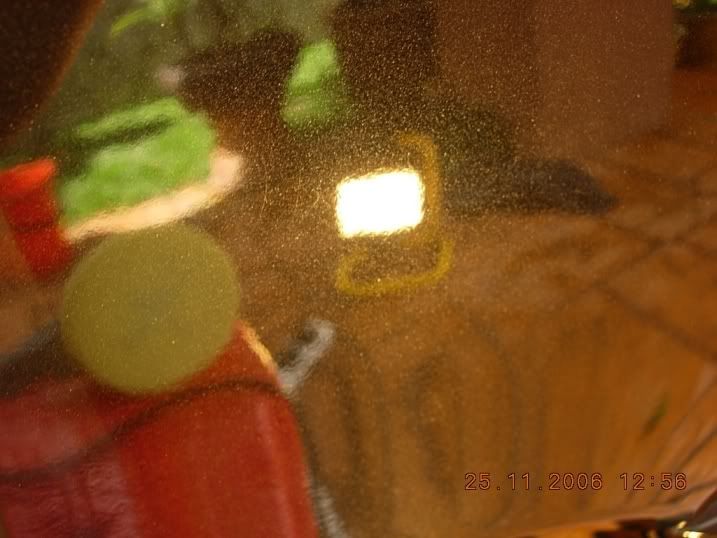
I was very pleased with the results, but it took quite long to break down, after completing the rear fender, I moved on to the boot. This time, without the aid of any sort of lighting.
I used DACP on the whole flat boot, and then removed with a microfiber. Later, when I accidently swept my palm across the surface, a gummy haze appeared.
I swiped my palm to and fro again, even more appeared. This is what the 'gum' looks like.

I think I did not break down DACP properly.
With the Halogen lamps I could still see little traces of DACP, which indicates that I have to continue polishing.
On the boot lid however, without the aid of any light source, it was difficult to tell whether DACP has completely broken down or not. The polish turned clear very early, For M80 Speed Glaze at this stage, it indicates that it is ready to be removed. But not DACP, under normal lighting conditions, it is very difficult to tell whether DACP has completely broken down.
Below is a picture that could be the result of me using too much polish and not giving enough time for the abrasives to break down
Here's another shot of the 'gum'
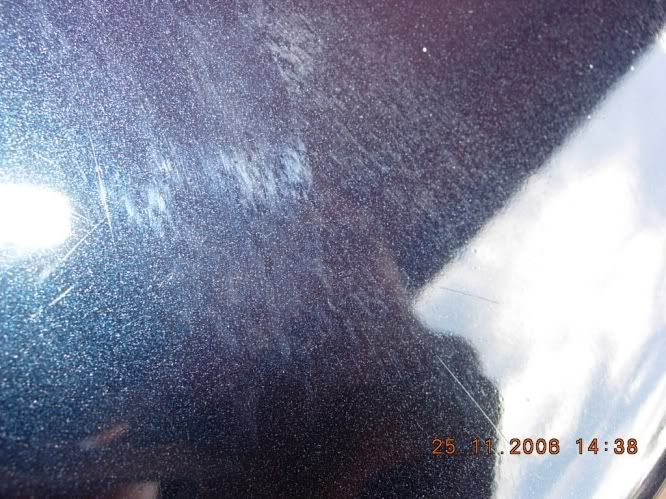
Also another thing with DACP is the amount of dust it creates, my pad cakes up pretty fast, there were hard substances at the edge of my pad. Speed Glaze doesn't do this to my pad, a pad working with Speed Glaze stays soft and moist.
With DACP, there were hard substances that feels like powder when rubbed between the fingers.
So I took an old toothbrush and gently scrape the caked on dust away from the pad, and shook it loose from the pad.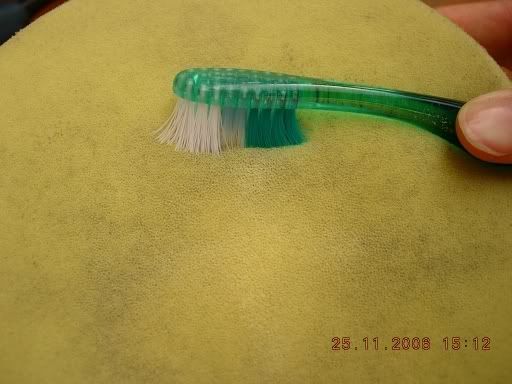
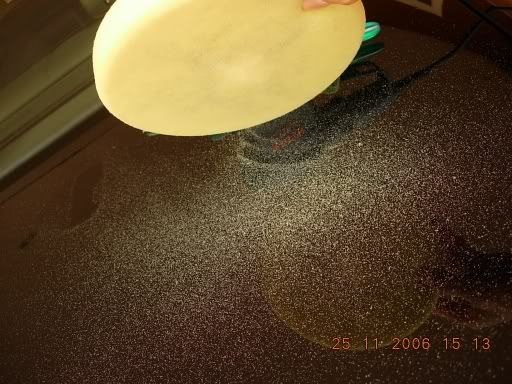
So much dust!.
And here is a picture showing the limits of a PC and DACP, deeper scratches that DACP couldn't remove,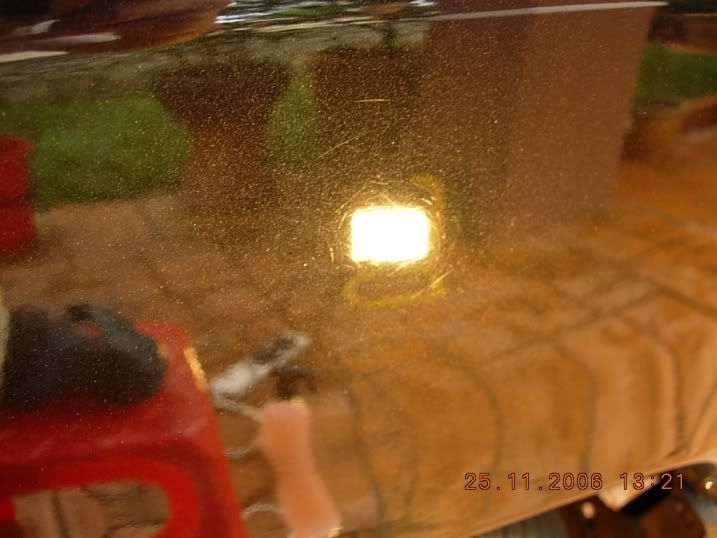
Summary
-Great Stuff
-Beginners may need good lighting to help indicate if DACP is completely broken down.
-It may not be able to create a flawless finish(with a PC), like in my case.
Half and Half
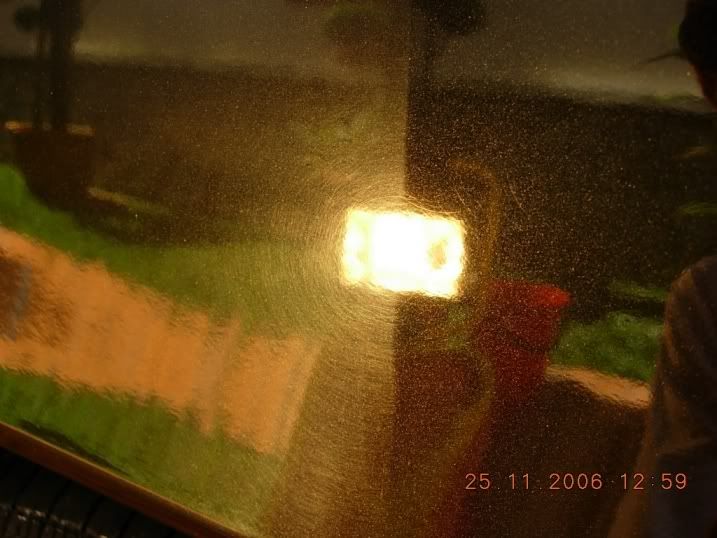
BEFORE
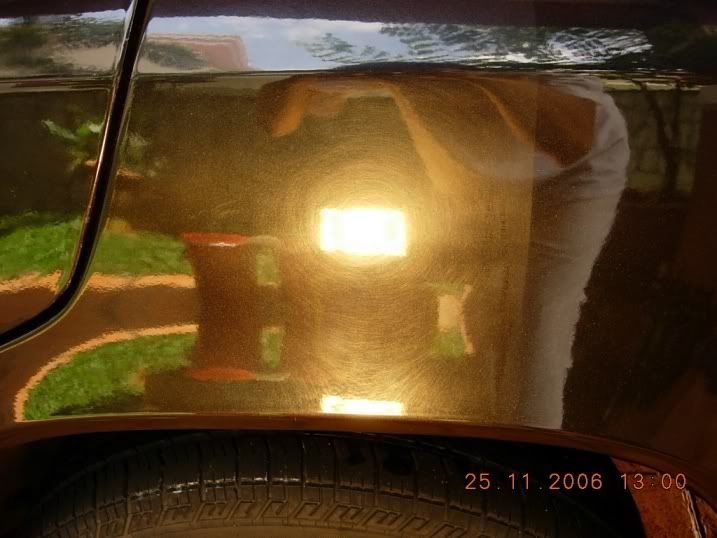
AFTER
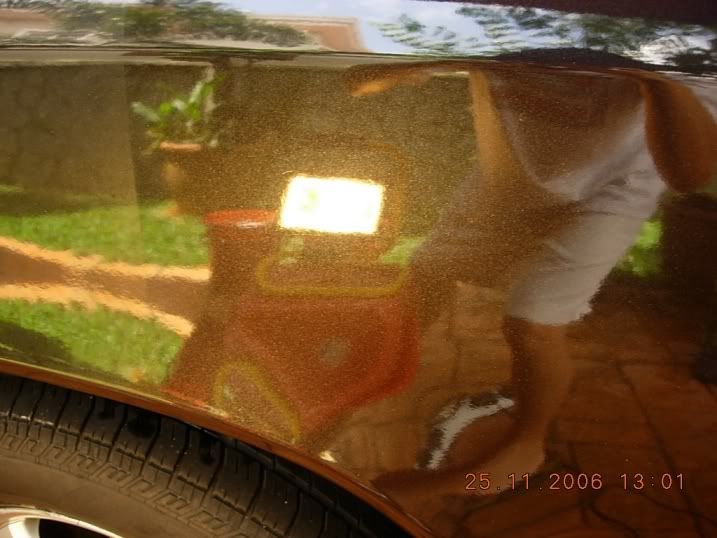
Thanks for reading this write-up. Happy Detailing folks!
I have no experience with a rotary buffer, my only choice is M83 Dual Action Cleaner/Polish to go with a Random Orbital Buffer(PC/DA).
My first impression on the product itself is that it is thicker than M80 Speed Glaze, more creamy than liquid.
I read several threads about DACP first, teh I knew that I had to work it in longer than most polishes because of it's less 'oily' nature.
So I took my pad, mist it with Last Touch spray detailer to prime the pad, and put a small 'X' of DACP in the middle of the pad.
press it against the panel a few times, spread the polish and work it in. The very first time I am working with DACP was with the guidance of a 300w Halogen Lamp.
This is what the finish looks like before any polishing, just a wash and clay.

Working it in until it turns clear, without any haze at all. The polish is then wiped off with a microfiber without any effort at all. Remarkably, DACP brought the original colour of the paint back, with about 50% of the swirls removed.
I wanted to see if any more passes would make a difference,
I gave it another 2 passes, 80% of the swirls were removed, what's left were deeper scratches in random directions. I gave it two more passes, the deeper scratches were still there.
This is the result after 3 passes of DACP.

I was very pleased with the results, but it took quite long to break down, after completing the rear fender, I moved on to the boot. This time, without the aid of any sort of lighting.
I used DACP on the whole flat boot, and then removed with a microfiber. Later, when I accidently swept my palm across the surface, a gummy haze appeared.
I swiped my palm to and fro again, even more appeared. This is what the 'gum' looks like.

I think I did not break down DACP properly.
With the Halogen lamps I could still see little traces of DACP, which indicates that I have to continue polishing.
On the boot lid however, without the aid of any light source, it was difficult to tell whether DACP has completely broken down or not. The polish turned clear very early, For M80 Speed Glaze at this stage, it indicates that it is ready to be removed. But not DACP, under normal lighting conditions, it is very difficult to tell whether DACP has completely broken down.
Below is a picture that could be the result of me using too much polish and not giving enough time for the abrasives to break down
Here's another shot of the 'gum'

Also another thing with DACP is the amount of dust it creates, my pad cakes up pretty fast, there were hard substances at the edge of my pad. Speed Glaze doesn't do this to my pad, a pad working with Speed Glaze stays soft and moist.
With DACP, there were hard substances that feels like powder when rubbed between the fingers.
So I took an old toothbrush and gently scrape the caked on dust away from the pad, and shook it loose from the pad.


So much dust!.
And here is a picture showing the limits of a PC and DACP, deeper scratches that DACP couldn't remove,

Summary
-Great Stuff
-Beginners may need good lighting to help indicate if DACP is completely broken down.
-It may not be able to create a flawless finish(with a PC), like in my case.
Half and Half

BEFORE

AFTER

Thanks for reading this write-up. Happy Detailing folks!





Comment